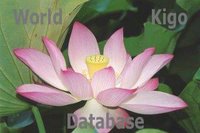© Original from the Japan Times Dec. 7, 2006
Taijiquan getting an all new workout
By RYOJU TOKAI
Kyodo News
The Chinese martial art Taijiquan, or Tai Chi, characterized by its slow movements and practiced as a method of exercise, is enjoying a second boom in Japan.

A special event called the Shibuya Taikyokuken (Taijiquan) Festival was held in Tokyo last month to mark the 50th anniversary of the creation of the "24-style simplified Taijiquan," which was derived from China's traditional martial arts for people interested in strengthening body and mind by practicing its slow routines and deep inhalation.
Taijiquan originated in China during the Ming and Qing dynasties in the 17th century based on the philosophy of positive and negative principles.
In 1956, martial arts expert Li Tianji devised the simplified form that subsequently became popular in China as a means of exercise.
The Tokyo festival included a Taijiquan practice by 1,000 people and a demonstration performance by Li Deyin, a professor at People's University of China and a chief referee at international Taijiquan contests.
He demonstrated gentle but powerful motions, his feet and the ground in perfect balance. Using fans and swords, teachers taught participants various forms of exercise, and some enthusiastically asked questions about how to improve their equilibrium and style.
"Taijiquan is physical exercise using the mind. Use your entire mind and move your body," Li said.
"There are not many sports that the elderly can play, but thanks to Taijiquan I am now strong in my legs and lower back," said Michiko Kodama, 69, who took up the art three years ago. "I don't trip up. I concentrate on it, but I am happy because I can relax."
The festival was sponsored by the Taijiquan Friendship Association in Japan, the Chinese government, the Beijing People's Association for Friendship with Foreign Countries and other entities. The society is one of the largest groups of its kind in Japan. Membership has nearly doubled in the last five years to about 1,800.
"The number of middle-aged and older women in particular is growing," Association President Yoshinori Koike said. "Taijiquan is rather difficult (to master). Many people are hooked by its depth. Since it is suited to an individual's physical strength, three generations -- a grandmother, mother and granddaughter -- can enjoy it together."
Taijiquan found its way to Japan in 1959 and a group of young people, including Koike who received training from Li Tianji, practiced it. Its first boom here occurred in the late 1970s after TV stations broadcast commercials showing some Beijing citizens doing exercises in slow and relaxed movements.
It is believed about 1 million Japanese currently practice Taijiquan. Classes and group activities are spreading across the country, and the municipal government in Kitakata, Fukushima Prefecture, has declared the city "Taijiquan town."
Taijiquan gatherings have been held every August since 2003 at the Roppongi Hills complex in Tokyo, gaining the attention of businesspeople and salaried men and women.
The sport tends to be regarded as an exercise for health but is actually a full-scale martial art -- a form of "wushu," which consists of "taolu" (forms) and "sanda" (sparring). Taolu is similar to gymnastics and involves martial arts maneuvers and defensive moves.
Professor Li said the essence of Taijiquan represents the unity of nature and human beings in Chinese philosophy, adding he hopes those who have obtained an understanding of the basic moves will explore the spiritual side. The supreme feeling attained from it, he said, is calmness and tranquillity.
The Japan Times (C) All rights reserved
:::::::::::::::::::::::::::::::::::::::::::::::::::::::::::::::::::::::::::::::::::::::::::::::::::::
INDEX OF ARTICLES FROM SYL WUSHU NEWSLETTER
http://www.shouyuliang.com/newsletter/index.shtml
極楽庵
GokuRakuAn
だるま資料館
Daruma Museum, Japan
:::::::::::::::::::::::::::::::::::::::::::::::::::::::::::::::::::::::::::::::::::::::::::::::::::::



No comments:
Post a Comment